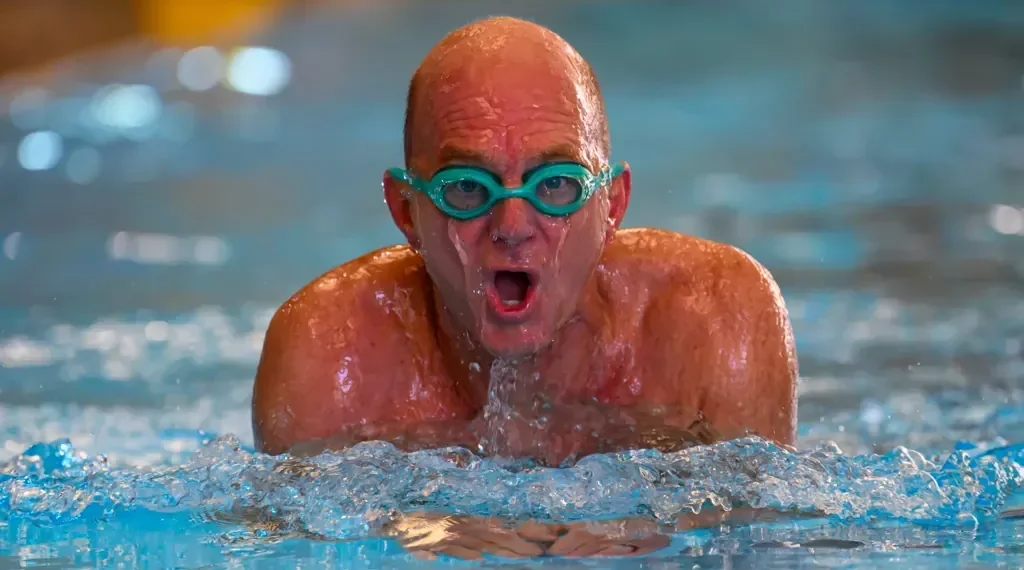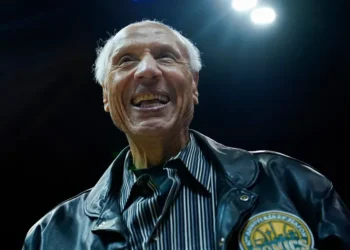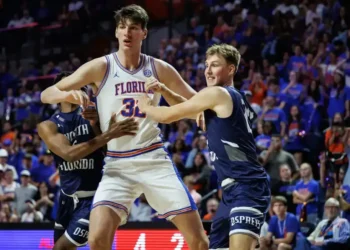Rowdy Gaines Provides Expert Advice for Older Swimmers Returning to the Pool
Three-time Olympic gold medalist Rowdy Gaines, known as the “voice of swimming” on NBC, shares practical tips for older swimmers and those returning to the pool after years away. Emphasizing efficiency, patience, and injury prevention, Gaines highlights how swimming can remain a lifelong form of exercise.
Why Swimming Is Ideal at Any Age
Swimming offers a low-impact, full-body workout that is accessible to all ages. The water provides gentle resistance, making it an effective way to build strength and endurance without stressing joints. Gaines, who won three gold medals at the 1984 Los Angeles Olympics, considers swimming superior to many other forms of exercise, particularly as people age.
“Swimming is one of the few sports you can do forever,” Gaines told The Associated Press. His experience includes setting 10 world records between 1978 and 1984 and competing at the international level despite missing the 1980 Moscow Olympics due to the U.S. boycott.
At 66, Gaines notes that his 90-year-old father, Buddy, is training again for a senior swimming meet, having not competed seriously for nearly seven decades.
Mastering Technique First
Gaines emphasizes that older or returning swimmers should prioritize technique over raw power. Most recreational swimmers use freestyle, also known as the front crawl, but the advice applies to backstroke, breaststroke, and butterfly as well.
“Water rewards efficiency,” Gaines explained. He recommends taking long, smooth strokes and keeping the head aligned with the body. This approach reduces strain and maximizes movement through the water. For beginners, relying on brute strength can be counterproductive.
Building Endurance Gradually
Gaines advises starting slowly, particularly if it has been years since your last swim. Rather than attempting long sessions immediately, he suggests breaking workouts into manageable segments. For example, swim 25 meters, rest until your heart rate normalizes, and repeat eight to ten times.
The goal is to gradually work up to 20–30 minute sessions, ideally three times a week. Consistency, rather than intensity, is key. “Three days a week is the sweet spot,” Gaines said. “If you’re swimming less than that, it’s tough to build the rhythm and consistency you need.”
Preventing Injury
Warming up and listening to your body are critical to avoid injury. Gaines recommends pre-swim stretches and shoulder exercises on dry land. Strength training can also support swimming performance.
Shoulder pain is common among swimmers, but Gaines distinguishes between normal fatigue and actual pain. “Pain is real. If you feel it, stop and adjust your workout,” he said. Incorporating backstroke or breaststroke can ease shoulder strain, while butterfly requires caution due to higher stress on the shoulders.
The Mental Aspect of Swimming
Gaines stresses the importance of enjoying the water. He encourages swimmers to focus on feeling comfortable and connecting with the water rather than overexerting themselves.
“Learn to feel the water,” he said. “Even for recreational swimmers, that awareness is more important than speed or distance.” Varying workouts in terms of time, strokes, and distance helps maintain motivation and mental engagement.
Hydration, Pool Conditions, and Training Tools
While hydration is often overlooked, swimmers lose fluids even in water. Gaines recommends pools around 80°F (27°C) to prevent dehydration. Training aids like swim fins, paddles, and pull-buoys can provide variety and strengthen different muscle groups.
Gaines, who swims six days a week for 2,000–2,500 meters, balances his routine with 40% freestyle and 20% each of backstroke, breaststroke, and kicking exercises. “Swimming can almost be meditation,” he said, noting that even a three-day-per-week routine can offer physical and mental benefits.
Final Advice for Older and Returning Swimmers
Gaines’ guidance emphasizes patience, consistency, and enjoyment. Starting slow, refining technique, preventing injury, and maintaining a positive mindset are central to sustaining swimming as a lifelong exercise.
“Even if you don’t love the swim itself, the sense of accomplishment and endorphins afterward make it worthwhile,” he said, underscoring the holistic benefits of water-based exercise for all ages.
This article was rewritten by JournosNews.com based on verified reporting from trusted sources. The content has been independently reviewed, fact-checked, and edited for accuracy, neutrality, tone, and global readability in accordance with Google News and AdSense standards.
All opinions, quotes, or statements from contributors, experts, or sourced organizations do not necessarily reflect the views of JournosNews.com. JournosNews.com maintains full editorial independence from any external funders, sponsors, or organizations.
Stay informed with JournosNews.com — your trusted source for verified global reporting and in-depth analysis. Follow us on Google News, BlueSky, and X for real-time updates.











